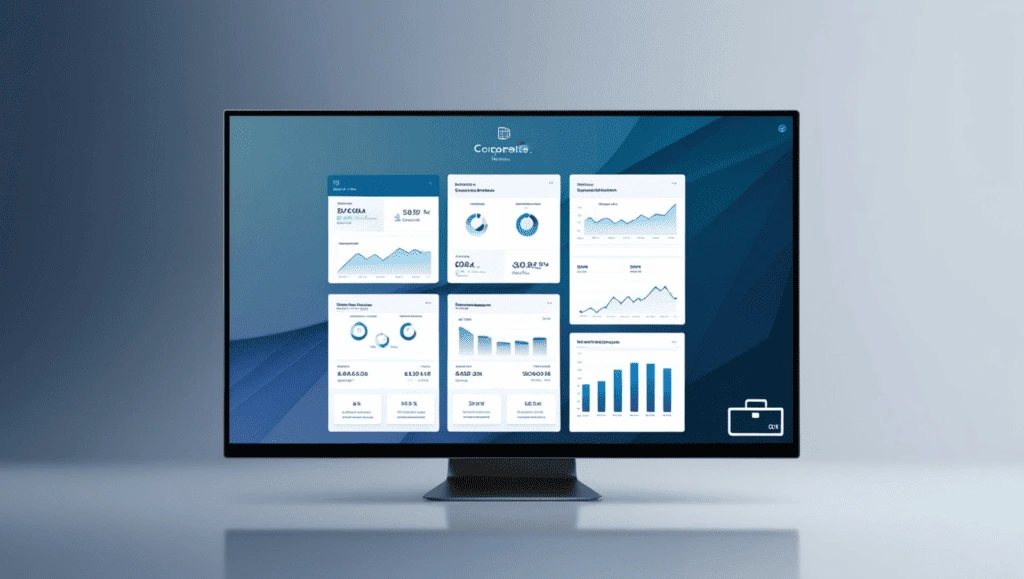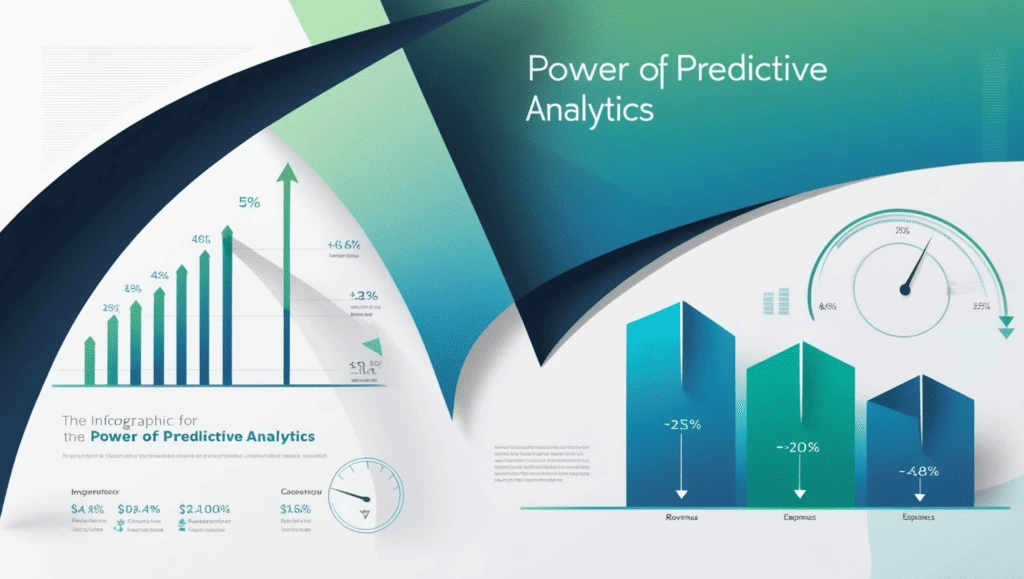In today’s fast-paced business environment, Financial Planning and Analysis (FP&A) tools have become indispensable for organizations seeking to streamline their financial operations. These tools are designed to help businesses make informed decisions by analyzing financial data, forecasting trends, and improving overall financial performance. With advancements in technology, FP&A tools now feature sophisticated capabilities, such as AI, machine learning, and predictive analytics, to provide deeper insights and enhance decision-making. From data integration to risk mitigation, these tools offer a wide range of features that can optimize financial planning. This article explores the key features of modern FP&A tools and how they can help businesses improve forecasting, security, scenario planning, and more.
Key Features of a Robust Financial Planning and Analysis (FP&A) Tool.
A financial planning and analysis (FP&A) tool plays a crucial role in helping organizations manage their financial strategies. The ideal tool combines accuracy, efficiency, and usability, empowering teams to make informed decisions and plan for the future. Key features such as data integration, visualization, and security ensure these tools provide comprehensive support for financial planning needs. This guide breaks down the essential components of an effective FP&A tool, offering insight into how each feature contributes to improved performance and decision-making.
Seamless Data Integration
Effective FP&A tools integrate seamlessly with existing financial systems, including accounting software like QuickBooks or enterprise resource planning (ERP) platforms like SAP. This connectivity ensures that financial data flows effortlessly across platforms, reducing manual entry and minimizing errors. By consolidating data from various sources, teams can access a unified view of financial information, which is essential for accurate analysis and reporting. Integration also saves time, enabling finance professionals to focus on strategic tasks rather than data management.
Advanced Data Visualization
Data visualization is critical for identifying trends, spotting anomalies, and communicating financial insights. Robust FP&A tools include intuitive dashboards, graphs, and charts that present complex data in an easily understandable format. These visuals allow users to grasp key metrics at a glance, making it easier to identify opportunities and address potential issues. For example, a dashboard displaying cash flow trends or budget variances can provide actionable insights that drive smarter decision-making. Tools that offer customizable visualizations allow businesses to tailor their analysis to specific goals or departments.
Forecasting and Budgeting Capabilities
Forecasting and budgeting are central to financial planning. Advanced FP&A tools incorporate features such as statistical modeling and machine learning algorithms to improve accuracy. These tools can predict future financial trends by analyzing historical data, offering organizations a competitive edge. Additionally, real-time forecasting capabilities allow companies to adapt quickly to changing market conditions. Budgeting tools within FP&A software streamline the creation and monitoring of budgets, ensuring that resources are allocated efficiently and aligned with organizational objectives.
Scenario Planning and “What-If” Analysis
Scenario planning tools help businesses evaluate the potential impact of various financial decisions. By performing “what-if” analyses, organizations can model different outcomes based on changes in key variables, such as revenue, costs, or market conditions. This feature is especially valuable for strategic planning, as it allows companies to anticipate challenges and explore opportunities. For example, a business might assess how a 10% increase in raw material costs would affect profitability and use this insight to adjust its strategy accordingly.
Comprehensive Reporting and Analytics
Generating detailed financial reports is a core function of FP&A tools. These tools provide access to essential reports, including income statements, balance sheets, and cash flow statements, ensuring a clear understanding of financial performance. Advanced analytics features enable teams to delve deeper into the data, uncovering insights that support strategic decision-making. Automated reporting functions save time and reduce the risk of errors, ensuring reports are consistent and reliable. This level of detail is invaluable for stakeholders, from executives to investors.
Real-Time Collaboration
Collaboration features are increasingly important in modern FP&A tools, as financial planning often involves input from multiple team members. Real-time collaboration capabilities enable users to work together on budgets, forecasts, and reports without version control issues. Cloud-based platforms allow teams to share updates instantly, regardless of location. This fosters a more dynamic and inclusive planning process, where everyone involved can contribute their expertise and insights. By improving communication, these features enhance both efficiency and decision-making.
Robust Security Measures
Protecting sensitive financial data is paramount. FP&A tools should implement robust security features, such as encryption, multi-factor authentication, and role-based access controls. These measures ensure that only authorized personnel can access specific data, reducing the risk of breaches. Cloud-based tools must also comply with industry standards and regulations, such as GDPR or SOC 2, to safeguard information. Strong security protocols not only protect the company’s assets but also build trust with stakeholders, who expect high standards of confidentiality and integrity.

Integration with Other Financial Systems
Financial Planning and Analysis (FP&A) tools are most effective when seamlessly integrated with other financial systems, such as accounting software and ERP platforms. Integration ensures a smooth flow of data across platforms, enabling organizations to streamline their financial processes. By automating data transfer and providing real-time insights, these tools empower teams to make more accurate and informed decisions.
Automated Data Transfer for Efficiency
One of the key benefits of integration is automated data transfer. FP&A tools connect with financial systems using APIs or data connectors, eliminating the need for manual data entry. This automation not only saves time but also reduces the likelihood of human error, ensuring that the data used for analysis is accurate and up-to-date. For example, accounting software like QuickBooks or ERP systems such as SAP can feed financial data directly into the FP&A platform, creating a unified data source.
Consolidated Reporting and Real-Time Insights
Integration allows businesses to consolidate data from multiple systems into one platform, making it easier to generate comprehensive financial reports. These reports provide a holistic view of the organization’s financial health, encompassing income statements, balance sheets, and cash flow statements. Additionally, integration enables real-time insights by ensuring that data is updated continuously. With access to the latest information, decision-makers can respond quickly to changing conditions, whether it’s reallocating budgets or adjusting forecasts.
The Role of Automation
Automation has transformed financial forecasting and analysis by streamlining processes, reducing errors, and enhancing overall efficiency. By automating repetitive tasks, finance teams can focus on higher-value activities such as strategic decision-making and scenario planning. This modern approach not only saves time but also improves the accuracy and reliability of financial data.
Reducing Manual Tasks
One of the primary benefits of automation is the elimination of time-consuming manual tasks. Processes like data entry, report generation, and updating spreadsheets are automated, freeing up valuable time for finance professionals. Instead of getting bogged down in administrative work, teams can direct their efforts toward analyzing data and developing actionable insights. Tools like QuickBooks and SAP enable seamless automation, allowing organizations to streamline their workflows and prioritize strategic planning.
Enhancing Accuracy and Efficiency
Automation minimizes the risk of human error, which is critical in financial forecasting. Errors in manual data entry can lead to incorrect projections and costly decisions. Automated systems ensure consistency and precision, improving the reliability of financial models. Additionally, automation accelerates processes, allowing organizations to generate real-time insights and make quicker decisions. For instance, generating a detailed cash flow analysis or forecasting revenue trends becomes a faster and more efficient task with automated tools.

Identifying and Mitigating Financial Risks
Financial risks are inevitable for any organization, but the ability to identify and address them proactively can make a significant difference in outcomes. Financial Planning and Analysis (FP&A) tools offer valuable support in risk management by providing insights through data analysis, scenario planning, and early warning mechanisms. These capabilities enable organizations to detect potential risks and implement strategies to mitigate them effectively.
Assessing Risks and Analyzing Scenarios
FP&A tools excel in risk assessment by analyzing historical data to uncover patterns that may signal potential threats. By identifying trends such as declining revenue or rising costs, these tools provide a foundation for understanding where risks may arise. Scenario planning further enhances this process by simulating various situations to evaluate their potential impact. For instance, organizations can assess the effect of economic downturns, interest rate changes, or supply chain disruptions on financial performance. This predictive capability equips businesses to prepare for uncertainties with greater confidence and precision.
Monitoring KPIs and Implementing Strategies
FP&A tools also help monitor key performance indicators (KPIs) that act as early warning signals for financial distress. For example, tracking metrics such as cash flow, debt-to-equity ratios, or profit margins can alert teams to issues before they escalate. Once risks are identified, organizations can leverage FP&A tools to develop and implement risk mitigation strategies. These might include diversifying revenue streams, cutting non-essential expenses, or increasing liquidity reserves. Tools like QuickBooks and SAP provide real-time data and analytics, enabling businesses to take prompt and informed actions to safeguard their financial stability.
Key Metrics and KPIs
Tracking key metrics and performance indicators (KPIs) is essential for understanding business health and making informed decisions. Financial Planning and Analysis (FP&A) tools simplify this process by offering comprehensive tracking and real-time insights into critical financial, operational, and liquidity metrics. These tools empower businesses to measure progress, identify areas for improvement, and make data-driven decisions to enhance overall performance.
Monitoring Financial Performance
FP&A tools help businesses assess their financial performance through metrics like revenue, profit margin, return on investment (ROI), and earnings per share (EPS). These indicators provide a clear picture of profitability and financial growth. For instance, tracking profit margins can help organizations identify cost inefficiencies, while ROI offers insight into the effectiveness of investments. Tools like QuickBooks allow businesses to monitor these metrics effortlessly, ensuring they stay on top of their financial goals.
Evaluating Operational Efficiency and Liquidity
In addition to financial metrics, FP&A tools track operational efficiency through measures like operating costs, inventory turnover, and customer satisfaction. These metrics enable businesses to optimize processes and improve customer experiences. Liquidity metrics, such as cash flow, working capital, and debt-to-equity ratio, are equally important. They help organizations maintain financial stability by ensuring they can meet short-term obligations while managing debt effectively. Platforms like SAP provide advanced analytics to monitor these metrics, helping organizations maintain both operational and financial health.

Scenario Planning and “What-If” Analysis
Scenario planning and “what-if” analysis are essential tools for navigating uncertainties in business environments. Financial Planning and Analysis (FP&A) tools empower organizations to simulate various scenarios, evaluate their impact, and make informed strategic decisions. By anticipating potential challenges and opportunities, businesses can build resilience and optimize their strategies for growth and stability.
Simulating and Evaluating Scenarios
FP&A tools allow businesses to simulate a range of scenarios, from economic downturns to increased competition or new product launches. This capability enables organizations to explore the financial implications of different situations before they occur. For instance, companies can model the effects of a 10% decrease in sales or a 20% increase in production costs. These simulations provide a detailed view of how changes in variables could affect overall performance. Tools like QuickBooks and SAP offer intuitive interfaces for creating and analyzing such scenarios, ensuring that teams can explore options with ease.
Using Insights to Inform Strategic Decisions
The insights gained from scenario planning are invaluable for guiding strategic decisions. By assessing the potential outcomes of various scenarios, businesses can identify risks, uncover opportunities, and prioritize actions that align with their goals. For example, if a scenario highlights vulnerability to rising raw material costs, a company might focus on securing fixed-price contracts with suppliers. Similarly, positive outcomes in a product launch simulation could inform decisions about scaling production or marketing efforts. FP&A tools enhance decision-making by providing data-driven evidence that supports confident and strategic choices.
Common Challenges
While Financial Planning and Analysis (FP&A) tools provide significant benefits, businesses often face several challenges during their implementation. These tools can transform financial management and decision-making, but overcoming obstacles such as data quality issues, resistance to change, and cost concerns is essential for their success. Addressing these challenges proactively can help organizations fully leverage the power of FP&A tools.
Data Quality Issues
One of the most common challenges businesses encounter when implementing FP&A tools is data quality. Inconsistent or inaccurate data can severely hinder the effectiveness of the tool, leading to misleading insights and flawed financial analysis. For example, if data from different departments is not standardized or up to date, the FP&A tool might generate reports that don’t reflect the true state of the business. To address this challenge, organizations must prioritize data cleanliness by ensuring that data is consistently entered, validated, and maintained. Investing in data management practices and training staff on data integrity is crucial for making the most of FP&A tools.
Resistance to Change
Another significant barrier to the successful implementation of FP&A tools is resistance to change. Employees may be reluctant to adopt new tools and processes, especially if they are used to manual methods or legacy systems. This resistance can stem from a lack of familiarity, fear of increased workload, or concerns about learning curves. To overcome this, businesses should focus on providing clear communication about the benefits of the new tools. Offering comprehensive training and support will help employees feel more comfortable with the transition. Additionally, involving key stakeholders in the implementation process can increase buy-in and reduce resistance.
Cost and Complexity
Implementing and maintaining an FP&A tool can also be costly and complex. The initial investment in purchasing the software, setting it up, and integrating it with existing systems can strain budgets, especially for smaller organizations. Moreover, the ongoing costs of updates, support, and training can add up over time. Businesses must carefully evaluate the total cost of ownership and ensure that the benefits of the tool outweigh the expenses. It’s helpful to conduct a cost-benefit analysis and explore options that align with the company’s size and needs. Some FP&A tools, such as QuickBooks or SAP, offer scalable solutions that businesses can adjust as they grow.
Lack of Expertise
Finally, many businesses struggle with a lack of expertise in using FP&A tools effectively. Even with the best tools in place, the absence of skilled professionals who understand how to interpret data and generate actionable insights can undermine the tool’s potential. To address this, companies should invest in training for their financial teams or consider hiring individuals with specialized skills. By building internal expertise and fostering a culture of continuous learning, businesses can ensure they make the most of their FP&A investments.

Balancing Long-Term and Short-Term Planning
Balancing long-term strategic goals with short-term budget management is essential for sustainable growth. Financial Planning and Analysis (FP&A) tools help organizations achieve this balance by linking short-term financial decisions with long-term objectives. These tools provide the visibility and insights needed to monitor progress, adjust strategies, and plan for future challenges, ensuring that both immediate and future goals are aligned.
Aligning Short-Term Budgets with Long-Term Goals
FP&A tools help link short-term budgets to long-term strategic goals by providing a framework for financial planning that incorporates both timeframes. For example, businesses can ensure that their short-term spending priorities align with long-term objectives, such as expansion, innovation, or sustainability. This alignment is crucial for maintaining focus and achieving growth without sacrificing immediate financial health. By using tools like QuickBooks or SAP, organizations can create budgets that reflect their broader vision while remaining flexible enough to adapt to short-term needs.
Monitoring Progress and Making Adjustments
FP&A tools also enable businesses to track their progress toward long-term goals and adjust plans as needed. By providing real-time data and performance metrics, these tools allow businesses to identify any gaps or deviations from their strategic objectives. Regularly monitoring progress helps ensure that short-term actions continue to support long-term goals. If unexpected challenges arise, businesses can make data-driven adjustments to stay on track. This dynamic feedback loop helps organizations remain agile and responsive to changes in both the business environment and internal performance.
Scenario Planning for the Future
Using scenario planning, FP&A tools also help businesses anticipate future challenges and opportunities. By simulating different scenarios, such as economic shifts or market disruptions, organizations can better prepare for potential risks. This forward-looking approach ensures that short-term decisions are made with a clear understanding of their long-term implications. Scenario planning enhances strategic foresight, helping businesses remain adaptable while focusing on long-term success.
Security Measures
Ensuring the security of sensitive financial data is paramount for businesses using Financial Planning and Analysis (FP&A) tools. As these tools handle critical financial information, it is essential to implement robust security measures to protect against data breaches, unauthorized access, and potential loss. By using comprehensive security protocols, businesses can safeguard their financial data, build trust, and comply with data protection regulations.
Data Encryption
One of the most important security measures for protecting financial data is encryption. FP&A tools should encrypt data both at rest and in transit. Data encryption ensures that even if data is intercepted, it remains unreadable without the proper decryption keys. Encryption at rest protects stored data, such as financial reports or account information, while encryption in transit secures data as it moves between systems or is shared with authorized users. This dual-layer encryption approach significantly reduces the risk of data breaches and ensures that sensitive financial data is safeguarded throughout its lifecycle.
Access Controls
Another essential security measure is the implementation of strong access controls. These controls limit access to authorized users only, ensuring that sensitive financial data is protected from unauthorized viewing or manipulation. Access controls can be customized based on user roles, restricting permissions to specific functions or data sets. For example, managers might have access to budget forecasts, while analysts may only access historical data. Multi-factor authentication (MFA) can further strengthen access controls by requiring users to verify their identity through multiple methods, such as a password and a one-time code sent to their phone. By implementing these measures, businesses can ensure that only those with legitimate needs can access critical financial information.
Regular Security Audits
To maintain a high level of security, businesses should conduct regular security audits of their FP&A tools. Security audits identify vulnerabilities and assess the effectiveness of existing security protocols. By regularly testing the system, organizations can detect potential threats before they cause significant harm. Audits also help businesses stay compliant with industry regulations and standards, ensuring that data protection practices are up to date. An ongoing commitment to security audits demonstrates proactive risk management, which is crucial for maintaining trust with stakeholders and customers.
Backup and Disaster Recovery Plans
In addition to encryption and access controls, businesses should implement robust backup and disaster recovery plans. These plans ensure that, in the event of a cyberattack, hardware failure, or natural disaster, critical financial data can be quickly restored. Regular backups of financial data should be made, and these backups should be stored in secure, off-site locations. Disaster recovery plans should outline clear steps for restoring data and minimizing downtime. Having these safeguards in place ensures business continuity and protects financial data from being permanently lost.

Backup and Disaster Recovery Plans
Modern Financial Planning and Analysis (FP&A) tools are increasingly incorporating advanced features such as artificial intelligence (AI) and machine learning (ML) to enhance their functionality. These innovations allow businesses to gain deeper insights, improve accuracy, and automate complex tasks. By leveraging predictive analytics, automated insights, and personalized dashboards, organizations can make more informed financial decisions, streamline operations, and improve forecasting.
Predictive Analytics
One of the most powerful features of advanced FP&A tools is predictive analytics. By analyzing historical financial data, these tools can identify trends and predict future outcomes with greater accuracy. Predictive models allow businesses to anticipate revenue fluctuations, cost changes, or market dynamics, enabling proactive decision-making. Instead of relying solely on historical data or assumptions, businesses can use data-driven insights to forecast potential scenarios. This capability is particularly valuable for long-term planning and risk management, as it helps organizations prepare for future challenges before they occur.
Automated Insights
AI-powered FP&A tools also offer automated insights that can identify key patterns and anomalies in large datasets. These tools use machine learning algorithms to sift through vast amounts of data, highlighting critical information that may otherwise go unnoticed. Automated insights help financial analysts focus on what matters most, rather than spending time manually reviewing data. For example, the system may identify an unexpected drop in sales or a rise in operational costs, allowing the team to investigate the issue promptly. This ability to detect anomalies early helps organizations address problems before they escalate, leading to better financial health.
Improved Forecasting Accuracy
Advanced features such as machine learning significantly improve the accuracy of forecasting models. Traditional forecasting methods often rely on simple historical trends, which may not account for changing market conditions or complex variables. AI and ML, on the other hand, can analyze multiple data points simultaneously and consider various external factors, resulting in more precise predictions. This enhanced accuracy reduces the margin for error, ensuring that businesses make better-informed decisions about budgeting, investment, and growth. Improved forecasting also helps companies allocate resources more efficiently, reducing waste and optimizing financial performance.
Personalized Dashboards
Another valuable feature in advanced FP&A tools is personalized dashboards. These dashboards are tailored to the specific needs and preferences of individual users, such as financial analysts, managers, or executives. By customizing the layout and data presentation, users can focus on the metrics that are most relevant to their roles. Personalized dashboards provide real-time insights and performance tracking, empowering users to make quick, data-driven decisions. For example, executives may focus on high-level KPIs, while financial analysts can drill down into more detailed financial data. This level of customization enhances user experience and enables more effective decision-making.







Leave a Reply